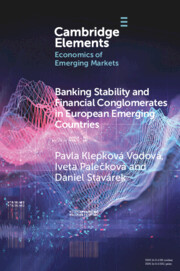Element contents
Banking Stability and Financial Conglomerates in European Emerging Countries
Published online by Cambridge University Press: 16 December 2022
Summary
- Type
- Element
- Information
- Online ISBN: 9781009092166Publisher: Cambridge University PressPrint publication: 19 January 2023



